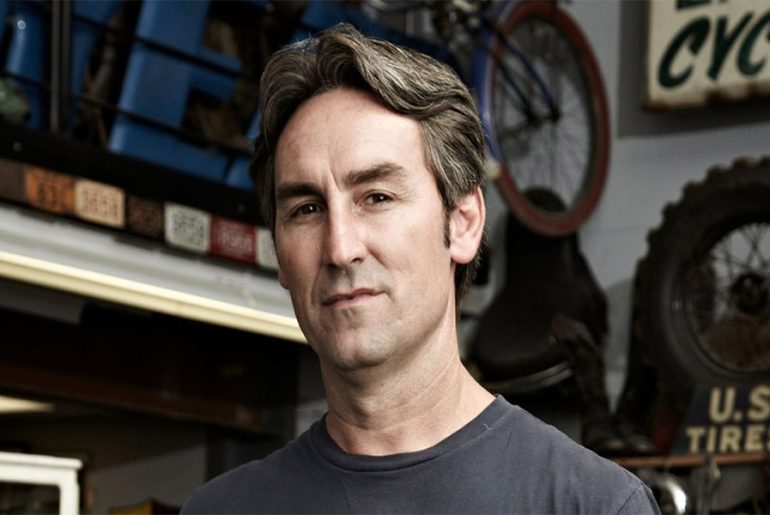The American Pickers star has transformed his love for antiques into something far more meaningful than television entertainment. The Mike Wolfe passion project sustainable historic methods represent a revolutionary approach to heritage conservation that combines environmental responsibility with historic preservation. His dedication to preserving American history through environmentally conscious restoration practices demonstrates how sustainability principles can breathe new life into forgotten communities.
The Foundation of Sustainable Historic Preservation
Mike Wolfe’s approach centers on the principle that existing structures contain immense value beyond their monetary worth. He carefully restores historical properties while maintaining their authentic character, then repurposes them as functional spaces that serve local communities. This philosophy recognizes that every historic building represents decades or centuries of embedded energy, craftsmanship, and cultural significance.
The television personality has discovered that preservation naturally aligns with environmental responsibility. Rather than demolishing structures and sending materials to landfills, his projects focus on adaptive reuse and careful restoration. This approach reduces construction waste while honoring the original builders’ vision and skill.
Environmental Benefits of Wolfe’s Methods
Repurposing historic structures minimizes landfill waste, preserves original craftsmanship, and lowers environmental impact. When Wolfe restores a historic gas station or vintage motorcycle shop, he prevents tons of construction debris from entering waste streams. The materials salvaged from these projects often find new purposes, creating a circular economy within his preservation work.
The embedded energy concept plays a crucial role in his sustainable approach. Historic buildings already contain the energy invested in their original construction, from manufacturing materials to transportation and assembly. By preserving these structures, Wolfe maximizes the return on that initial energy investment rather than starting fresh with new construction.
Innovative Restoration Techniques
Wolfe employs several distinctive methods that set his preservation work apart from conventional approaches. His techniques prioritize authenticity while incorporating modern sustainability practices that ensure long-term viability.
Material Recovery and Reuse
The passion project emphasizes salvaging original materials whenever possible. Wolfe’s team carefully removes vintage hardware, reclaimed wood, original fixtures, and architectural details for restoration and reuse. This process requires specialized skills and patience but produces results that maintain historical integrity while reducing environmental impact.
Rather than contributing to mass consumerism, Wolfe’s work emphasizes reuse, recycling, and appreciation for craftsmanship. His approach celebrates the quality and durability of historic materials, many of which surpass modern alternatives in longevity and character.
Energy-Efficient Upgrades
While maintaining historic character remains paramount, Wolfe integrates modern energy efficiency improvements where appropriate. These upgrades include improved insulation techniques that respect original construction methods, updated electrical systems that meet current safety standards, and heating solutions that reduce energy consumption without compromising aesthetics.
The key lies in finding solutions that enhance performance while remaining invisible to observers. This balance requires extensive research into period-appropriate materials and techniques that can accommodate modern efficiency standards.
Community Impact Through Sustainable Preservation
Wolfe’s sustainable historic methods extend far beyond individual buildings to encompass entire communities. His preservation work creates ripple effects that revitalize local economies while maintaining environmental responsibility.
Economic Revitalization
Small towns benefit from renewed tourism, artisan activity, and amplified local commerce. When Wolfe restores a historic property, it often becomes a catalyst for broader community development. Local businesses experience increased foot traffic, property values stabilize, and residents develop renewed pride in their heritage.
The sustainable approach ensures these benefits persist over time. By using durable restoration methods and quality materials, Wolfe creates lasting improvements that continue generating economic value for decades.
Preserving Cultural Heritage
The passion project recognizes that buildings serve as repositories of cultural memory. It inspires everyone to determine which aspects of our history we are actively working to preserve and identify the stories that could be lost. Wolfe’s methods ensure these stories remain accessible to future generations while adapting spaces for contemporary use.
This cultural preservation aspect distinguishes his work from purely environmental sustainability efforts. The combination addresses both ecological responsibility and heritage conservation simultaneously.
Future Applications and Scalability
Wolfe’s sustainable historic methods offer a blueprint for broader preservation efforts across America. His success demonstrates that environmental responsibility and historic preservation can work together harmoniously, creating solutions that benefit both communities and the planet.
The techniques developed through his passion project can be adapted for various scales, from individual homeowner restoration projects to large-scale urban renewal initiatives. The principles of material reuse, energy efficiency, and community engagement remain applicable regardless of project size.
Training and Knowledge Transfer
The passion project increasingly focuses on sharing knowledge with other preservationists, contractors, and community leaders. This educational component ensures the sustainable methods will continue spreading beyond Wolfe’s direct involvement, multiplying the positive impact across the country.
Conclusion
Mike Wolfe’s passion project demonstrates how environmental responsibility and heritage conservation create lasting community benefits. His sustainable historic methods prove that preserving old structures reduces environmental impact while repurposing existing materials.
The success shows that sustainability and historical authenticity complement each other perfectly. Through careful restoration, material reuse, and community engagement, Wolfe has developed a model that other preservationists can adapt and expand.
The Mike Wolfe passion project sustainable historic methods offer hope for communities seeking to preserve their heritage while building an environmentally responsible future.






